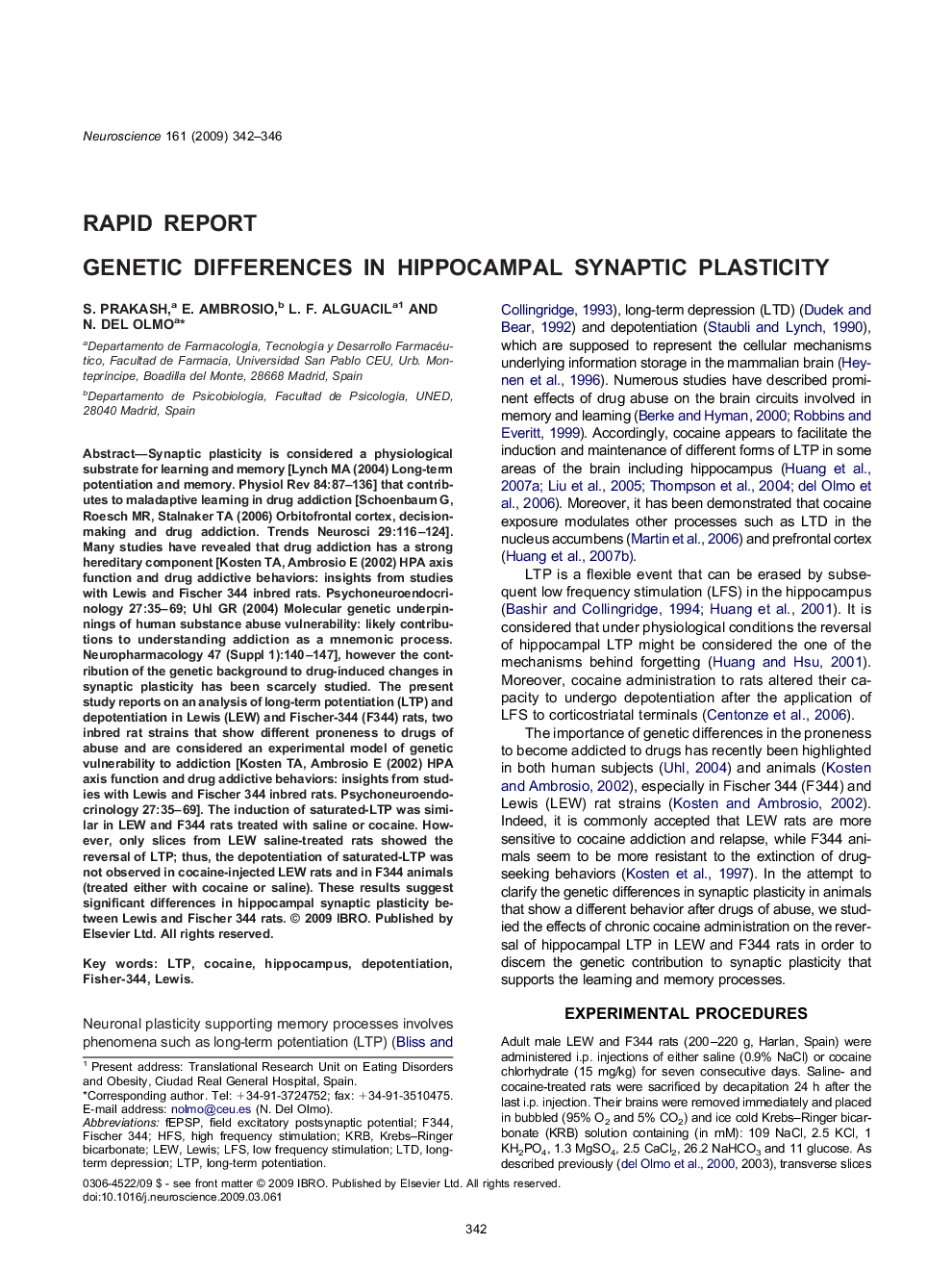| Article ID | Journal | Published Year | Pages | File Type |
|---|---|---|---|---|
| 6278168 | Neuroscience | 2009 | 5 Pages |
Abstract
Synaptic plasticity is considered a physiological substrate for learning and memory [Lynch MA (2004) Long-term potentiation and memory. Physiol Rev 84:87-136] that contributes to maladaptive learning in drug addiction [Schoenbaum G, Roesch MR, Stalnaker TA (2006) Orbitofrontal cortex, decision-making and drug addiction. Trends Neurosci 29:116-124]. Many studies have revealed that drug addiction has a strong hereditary component [Kosten TA, Ambrosio E (2002) HPA axis function and drug addictive behaviors: insights from studies with Lewis and Fischer 344 inbred rats. Psychoneuroendocrinology 27:35-69; Uhl GR (2004) Molecular genetic underpinnings of human substance abuse vulnerability: likely contributions to understanding addiction as a mnemonic process. Neuropharmacology 47 (Suppl 1):140-147], however the contribution of the genetic background to drug-induced changes in synaptic plasticity has been scarcely studied. The present study reports on an analysis of long-term potentiation (LTP) and depotentiation in Lewis (LEW) and Fischer-344 (F344) rats, two inbred rat strains that show different proneness to drugs of abuse and are considered an experimental model of genetic vulnerability to addiction [Kosten TA, Ambrosio E (2002) HPA axis function and drug addictive behaviors: insights from studies with Lewis and Fischer 344 inbred rats. Psychoneuroendocrinology 27:35-69]. The induction of saturated-LTP was similar in LEW and F344 rats treated with saline or cocaine. However, only slices from LEW saline-treated rats showed the reversal of LTP; thus, the depotentiation of saturated-LTP was not observed in cocaine-injected LEW rats and in F344 animals (treated either with cocaine or saline). These results suggest significant differences in hippocampal synaptic plasticity between Lewis and Fischer 344 rats.
Keywords
Related Topics
Life Sciences
Neuroscience
Neuroscience (General)
Authors
S. Prakash, E. Ambrosio, L.F. Alguacil, N. del Olmo,
